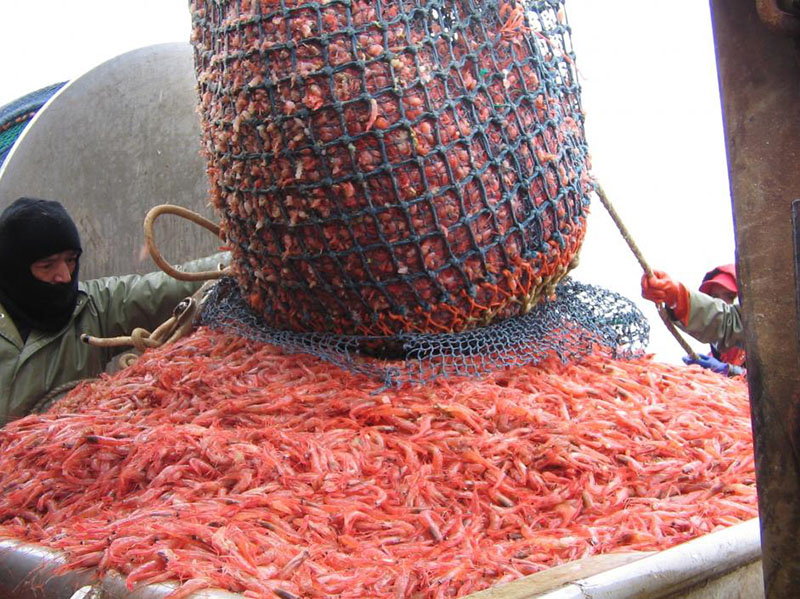Northern shrimp is hard to come by, but the small amount fishermen are allowed to catch this season are being appreciated by scientists and coveted by consumers in New England and beyond.
Late last year, regulators from the Atlantic States Marine Fisheries Commission approved a research set-aside program, allowing 10 trawlers and five trappers to catch a total quota of 53 metric tons of shrimp for 2017. The northern shrimp fishery has been shuttered since 2013 due to a collapsed population. The small amount being caught as part of the research program ensures that scientists can study the population, while keeping some shrimp on the market.
The 2017 research program started in mid-January and in the first two weeks one trawler from Massachusetts, one from New Hampshire and three from southern Maine each fished once per week. Trawlers participating in the program are permitted to a 1,200 pound trip limit once a week.
The N.H. boat caught 99 pounds the first week and almost double that the second week. The Mass. boat recorded 225 pounds the first week and 425 pounds in the next week. The three southern Maine boats came close to hitting their limits the first week, and then two of the boats hit bad winter weather, and only hauled in a portion of their trip limit. Five trawlers and five trappers from the midcoast Maine region started the following week. Two Port Clyde, Maine, boats caught 320 and 500 pounds their first week and three midcoast trawlers hit their daily limits. There is no trapper data available yet.
From the start of the program until mid-February, 8,857 pounds of shrimp had been unloaded from boats at the Portland Fish Exchange in Portland, Maine. Prices at auction varied from $6 per pound and jumped to an all-time high of over $12 per pound (whole) at the start of February. Prices are averaging about $8 per lb.
Maggie Hunter, a marine resource scientist in the northern shrimp program at Maine's Department of Marine Resources says so far, "These results are similar to last year’s, with highest catches in the Portland to midcoast Maine area." Hunter adds, "The shrimp are beautiful, averaging about 40 count per pound, mostly egg-bearing females so far, but egg hatch seems to be running earlier than last year." Hunter says more data will be available when the 8-week sampling program wraps up in mid-March.
According to Max Appelman, ASMFC Fishery Management Plan Coordinator, regulators plan to meet mid-March to review a draft amendment that explores state‐by‐state allocations, seasonal‐ and area‐based management in the fishery, and the mandatory use of size sorting grate systems to minimize harvest of small shrimp and ensure resource sustainability. The amendment also considers new measures to ensure better reporting.
While the program is keeping some shrimp in some markets and on restaurant menus, overall, it is not a huge amount. "It changes every day and it's just a little bit of shrimp," says Barry Kern, auction buyer at Nova Seafood in Portland, Maine. "It's not enough volume to create a market. Basically, someone is willing to pay $10 a pound for shrimp, and the market is reflecting that there is no supply. Some people are willing to pay for that one little taste. Will they buy the next time? I don't know.”
Nova Seafood has been able to purchase over 5,000 pounds of shrimp so far this year, all from research tows or research trapping, says Jack Lombard, Nova’s Chief Operating Officer. “This year, about 1/3 of what we’ve purchased has stayed here in Maine,” adds Lombard, “and 2/3 has gone out of state.”
And about 300 pounds of sweet Maine shrimp, says Lombard, recently went “to a chef at a high-end hotel in Beverly Hills, yes.”







